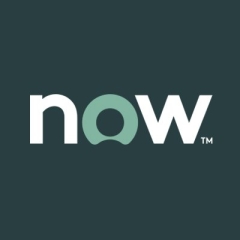What is our primary use case?
We do a lot of stuff around Mapping. We do Discovery. We do Identification/Reconciliation rules. We do the Transforms and stuff like that. Then, we validate the CMDB Health dashboard and stuff like that. That's predominantly the main work that we do around the CMDB and the data ingestion kind of stuff.
How has it helped my organization?
I work for a client and we find CMDB pretty useful as it's being leveraged across the board for all other service management practices. When I say service management practices, I refer to the incident, problem, change management, et cetera. The content in CMDB is pretty useful for us as that's the basis on which many, many decisions can be made. We go right down to the extent of leveraging the application portfolio. We leverage stuff like this to go back to creating files and figuring out which business service is impacted as a result of which CI. That is at its most basic level. We leverage the Discovery to ensure maximum availability and CIs are discovered, preventing manual ingestion. Our Identification/Reconciliation rules help us in affecting and understanding duplicates, and correctly remediating them, and making sure that we are on the right track. The out-of-the-box rules set by ServiceNow are great. The better we blend into it, the better it is for us.
What is most valuable?
Service Mapping is very useful. We found the APM, which is also part of the configuration, to be helpful. The APM has been pretty phenomenal.
Portfolio management is very useful for us. The Discovery aspect is great.
The performance analytics and the health dashboard are amazing to work with.
The CI Class Manager and its stuff around it; the IRE rules, the Integration/Reconciliation, the classes which are in there in the CI Class Manager are all pretty useful as well.
The data presidencies are pretty useful to me. The Reconciliation Engine appends to it.
The CMDB Health results, which have been configured by ServiceNow are used out-of-the-box are great. It's pretty useful to us.
We also use a lot of service associations, which help us to do the top-down mapping and understanding of end-to-end aspects if you want to have a chronological view.
Most importantly, I think I can see the CMDB of ServiceNow aligns very closely and very well with the CSDM model.
What needs improvement?
There are costly changes here and there. For example, it becomes difficult for us to identify the volume of patents. What we do is we fundamentally de-market and compare against the best and to another product that we were using before, which had some features that we didn't. For example, we use BMC Discovery. BMC Discovery has heaps of patents written using the TPL. BMC Discovery is a primitive tool and it's been in the market for a while. You would expect a lot more packages to be there. In ServiceNow, we are not there yet. It's less mature.
There should be a few more classes here and there. For example, there are people who keep talking about Apple devices. They need to be taken into account, and they are not. Sometimes, we have certain rules and regulations of CIs and how we can pick up only those CIs which are operational to a change and describe non-operational ones. When you work with load balancers, when they're off, they obviously go into a non-operational mode.
We, from a process side, need to understand certain areas where we need to blend in. I would think that, for example, Network Gear would be a separate class under the config item parent. However, now, it's come under the hardware. That makes sense.
I see the table called serial number that should be a lot more efficient and maybe that's the way we have configured it. That's where we are doing a shabby job - our duplication rules were on the serial number and the serial number table. The serial number table itself is a volatile table that keeps fluctuating from time to time. Things like that have to be eventually delivered. They keep coming, they keep coming.
I don't think there are any pain points. It's just that we love to understand from a process perspective where we need to rectify ourselves. The tool is made a little differently and we need to figure it out. Our process cannot be stubborn and say the tool has to blend with the process. As an organization, we are very strong in our process. We expect the tool to cater to us whenever we tweak things and mess them up. However, when you tweak something, you need to be able to go in and clean it up and not think it will sort itself out. You need to put a patch. However, if you put a patch on a patch on a patch you've entirely screwed up the tool.
The tool has given you the provision to do the customization, however, you need to be strategic about what you do. You need to be careful in terms of writing. When you say SCCM is a secondary source of truth, for example, you need to be sure what activities you want from there. If you have multiple tools that are going to ingest data into the CMDB, you need to be careful of what rules we write to ensure that they fall in place.
For how long have I used the solution?
We've been using the solution until recently. We used the solution in the last 18 or so months.
What do I think about the stability of the solution?
The solution is very stable. ServiceNow is the way forward for many of us. I would just work on BMC Remedy as well, however, I've not been impressed as much as I'm impressed with ServiceNow. ServiceNow is definitely a lot more advanced. It's a lot more flexible and it's quite easy to use unlike BMC's product, which is pretty sophisticated. The Discovery is a little more complicated. If you want to understand how mapping is, it's all confusing in some places. They even recommend the SAAM and the CAM mapping. Whereas in ServiceNow, it's pretty straightforward. The complexities are not there.
What do I think about the scalability of the solution?
The scalability is phenomenal. It's expandable, for sure. It's quite easy to do so as well. I've seen its integration with a lot of tools. We integrated it with analytical tools like Qlik Sense for various reasons. They are also integrated with tools like SCCM. We integrate pretty smartly and pretty extensively. It's scalable due to the fact that we can take and look at other modules which are the add-ons from ServiceNow itself, such as performance analytics, asset management, and whatnot.
We have all kinds of users, from the bottom to the top, from the business owner to the business managers. We have business users. We have the technology users. Then, we have the IT users themselves. Across the organization, we definitely can say we have around 25,000 users. At any point in time, concurrent usage could be up to 10,000, for sure.
ServiceNow is our single source of truth. That's the single service management tool that we're using right across the board. It is definitely being used extensively. We have plans in terms of extending the usage. The expansion may not be until we plan to acquire a new organization or something. Otherwise, now, it's pretty good.
How was the initial setup?
It took us about six months to set everything up, however, that's the organization. They're looking at a truckload of CIs in the CMDB. They're looking at about seven to eight million CIs, and therefore it was not going to be that straightforward and easy. It took us about three to six months due to the sheer volume. On top of that, we had our own organizational change that kept happening parallelly. People kept moving. People kept coming in. However, with something like this, it's all expected. It's part of the exercise.
There was complexity involved in the implementation, however, I can't blame it on the tool. Our thinking wasn't right. We didn't have the architects with the right frame of mind to put things together. The tool was in place. It's that we needed to know how to use it that held us back a bit. We needed to go and ask ourselves: "How do we use Discovery? How do we leverage on Mapping? How do we do things parallelly? What about other data? What about archive data? What are you going to keep? What are you going to flush out?" All those things, we needed to put in place.
We had about 15 to 20 people on the implementation process for six months. We have to do some structural changes in the organization as well. At the same time, we weren't blending it into HR. We were blending into an HR framework, so we were restructuring the organization in a one-sided way. That's possibly one of the reasons why it took a little bit more time to get the whole thing fixed.
During implementation we did the configuration. Parallelly, we started the incident, problem, and change management. It was a full-fledged implementation across the entire organization and it was done together. It wasn't like incident first and then change second, and problem third or something. We did all of them together.
The solution does require maintenance from time to time. I'm not involved personally in that. I use only one part of that whole thing. There are people who do the maintenance for the entire solution. There's actually a team that's full-fledged and on maintenance.
What's my experience with pricing, setup cost, and licensing?
I really do not know much about the pricing and licensing package. I'm not on top of that. It's no a part of the solution I directly deal with.
What other advice do I have?
We are partners with ServiceNow.
I'd rate the solution at a nine out of ten.
I'd advise other companies that, when you start using the tool, first, of course, you should have an architectural understanding of your organization. You need to have an understanding of what is it that you want to achieve, and an understanding of the end-to-end setup from the business to the end infrastructure layer. You want to know what you want and what you don't want, and have that well-built, and have an architectural view, and understand where your data comes in and how it comes in. CMDB can't help with that part.
Don't go and expect the CMDB to do all the magic for you. You need architectural brains to blend in with the tool and that's how this whole thing works. CMDB blends very nicely if you have the architectural brain and if you have a logical understanding of what you want. Don't expect the tool to do it for you by throwing in junk and saying, "Yeah, do it for me."
If you have this, you have a good process in the works already. You will be able to blend in with asset management. Config and asset work hand in glove as a second function. When you know how these two blend with each other, you know what the architectural view is, and if you have the right people and the right sense, the tool will help. If your base is weak, I don't think the other process will work at all.
If you really want to go down to the topmost to the bottom-most level, there are a lot of people on the business side who swill say, "I don't understand my application landscape. I don't understand this. I don't know why do we have so many products. Why do we have this? Why do we have that?" People don't understand. However, if you have a CMDB in place that actually manifests what the entire application landscape is, it's on top to bottom very comfortably. If you don't have CMDB, you'll regret it. I have seen many times it just cost the organization real money not having it in place. There has been financial loss, revenue loss, et cetera.
I've realized that if you have a good full-fledged CMDB, being involved in understanding what causes problems is not very difficult. You don't have to go searching. You can look at the devices. You can go pinpoint. We can narrow the search. What it means is we can enable faster resolutions. Obviously, you can have better and higher availability.
That's the impact of a good quality CMDB. Traceability is good. You're able to pinpoint to the bottom-most of the problem. You know where to go. With CMDB you no longer say "I don't understand my IT landscape. I don't understand why we have so many applications. I don't know what we're doing." In a split second, you can actually go and say, "You know what? There's a network problem, and I know that the glitches. Please go look at it." You can go right down to that level very quickly.
That's the advantage of having good quality CMDB. Good quality CMDB equals good quality data, which equals the ability to diagnose and sort out issues.
Which deployment model are you using for this solution?
Private Cloud
Disclosure: My company has a business relationship with this vendor other than being a customer. Partner








